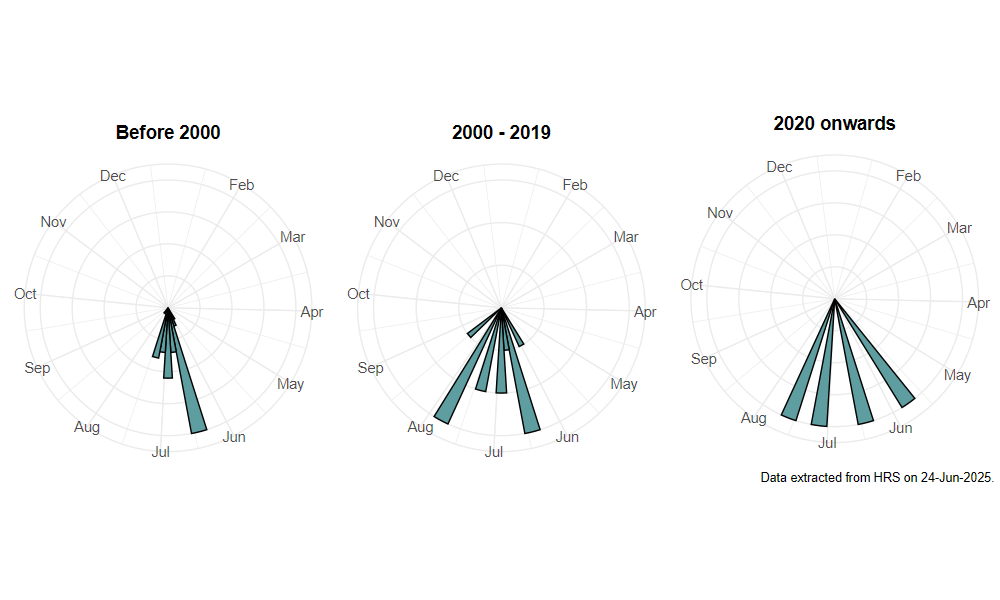Platycheirus melanopsis Loew, 1856
Identification
Identification difficulty = 4. ![]()
![]() according to Ball & Morris, 20241
according to Ball & Morris, 20241
Biology
This is a montane species that occurs at altitudes in excess of 250 to 300 metres. The larva is predaceous and it has been suggested that it is associated with the scale insect Arctorthezia cataphracta. Adult males are found hovering close to the ground, especially over bare ground of tracks and rocky outcrops.
Flight period
The following plots show the number of unique records per week excluding those reported to be of immature stages.

Status
Lower Risk (Near Threatened) - Ball & Morris, 20142. Rare (RDB3) - Falk, 19913 and Shirt, 19874.
Distribution
Work by the Malloch Society suggests that this is quite a widespread species in the mountains of the Scottish Highlands, especially in Perth and the Cairngorms, but also from high ground on Rhum. It is also recorded from the Lake District. Records from Wales and southern England are probably misidentifications, although there seems no reason why the species should not occur on mountains in Snowdonia and the Pennines.

-
Ball, S., & Morris, R. (2024). Hoverflies of Britain and Ireland. WILDGuides (3rd ed.). Oxford: Princeton University Press. ↩
-
Ball, S., & Morris, R. (2014). A review of the scarce and threatened flies of Great Britain. Part 6: Syrphidae. ( No. 9). Species status (pp. 1–130). Peterborough: JNCC. ↩
-
Falk, S. (1991). A review of the scarce and threatened flies of Great Britain. ( No. 39). Research and Survey in Nature Conservation (pp. 1–194). Peterborough: NCC. ↩
-
Shirt, D. (Ed.). (1987). Red Data Books: 2. Insects. Peterborough: NCC. ↩